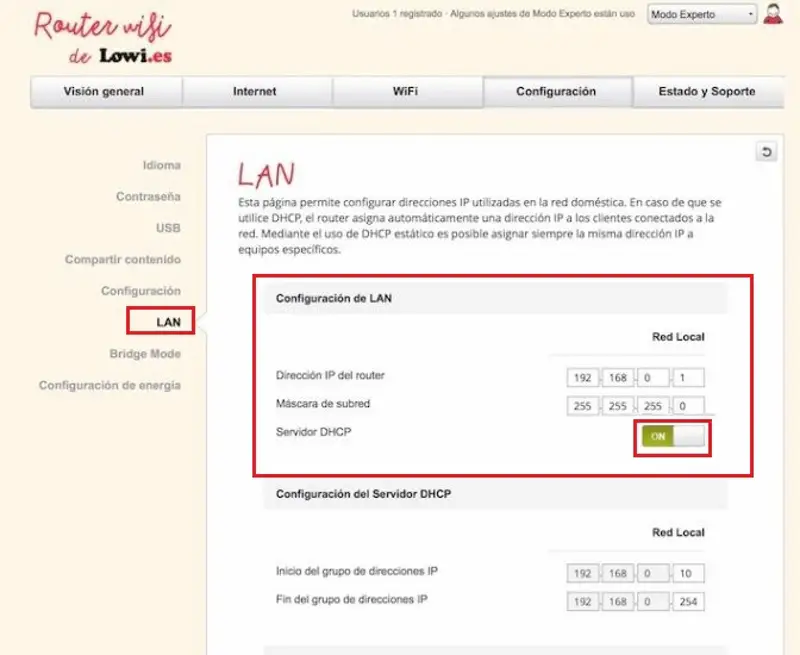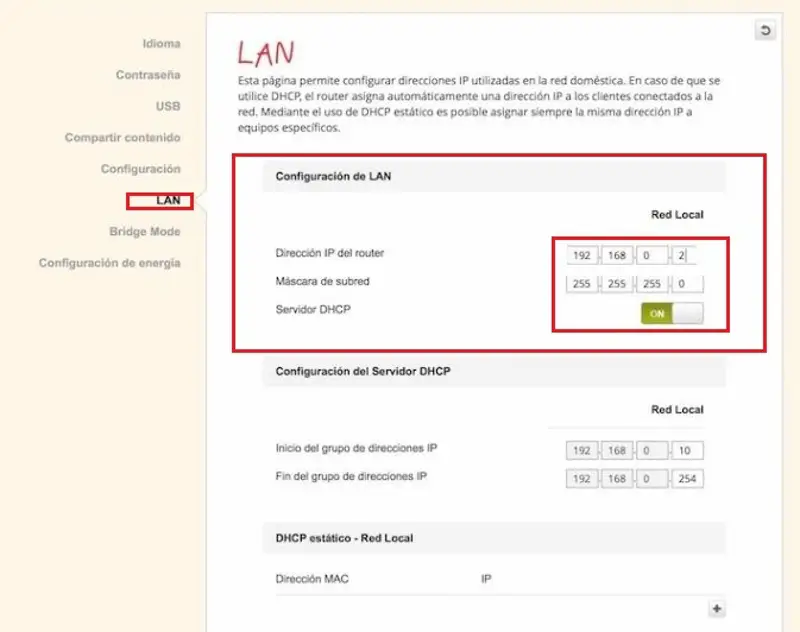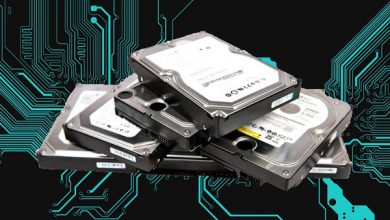How to connect two routers via Wi-Fi, PLC or cable to the same network line? Step by step guide

When we have a computer or device on a side of the house that is different from the location of the router, the first thing that comes to our mind is to change their position so that they are closer, as the connection becomes slow, but In this tutorial, we will teach you how to connect two routers via Wi-Fi, PLC or cable to the same network line .
This is not to scare you, but you should pay close attention to all the steps that we leave here as this process seems a bit complicated and if you do not follow the steps well you can get confused and enmeshed. Here we will explain each step in the simplest way possible.
In this tutorial, we will also show you what are the advantages of being able to connect two routers to the same network, because like everything else, we'll always want to know how it benefits us.
What is the use of connecting 2 routers to the same network line? Benefits
Often times we have problems with the signal of our Wi-Fi network so we need to be as close to the device as possible because in this way we can maintain a better signal. Although if we told you that it is possible to extend this signal by connecting two routers on the same line, would you believe us?
Well if you are one of those who must be seen to be believed then that is okay because what you will see in this post today is totally safe so if you are interested please pay close attention to what we tell you.
There are many advantages to connecting two routers to the same network, but the most important is the extension of the signal. , which is what we are all looking for, although we told you that it is not very simple but not difficult , a situation that is why we suggest that you pay as much attention as possible to this tutorial.
What do I need to be able to connect 2 routers to the same Internet line?
Perfect, if you're still here it's because you really want to know how to connect the two routers to the same network , but before we continue you need to know what we need to be able to do it.
Then, we will leave a series of items, not only to expand the network in question, but also so that we can have internet in both routers , the ones we need in this case are:
- Router (one of them with an Internet connection).
- An Ethernet cable (usually the yellow ones supplied in the router box).
Well with these elements, we can do what we want to do, obviously and we have to configure a series of parameters to be able to establish the connection correctly, what we will explain below .
Methods to connect two routers via Wi-Fi, PLC or cable to the same network
In this section we will explain the steps necessary to be able to connect two routers, by Wi-Fi or PLC, or else we need a cable connection to the same network, in order to improve our Internet browsing experience .
Well as we mentioned before it's not easy but neither is it so pay attention to every step we will leave below and if for some reason you get lost we recommend that you re-read everything until you locate the step you are missing.
By cable
Connecting the two routers is the simplest step in the entire assembly process. To connect the two routers in series, just insert the Ethernet cable into the LAN slot yellow 1 router with an Internet connection.
If you have a cable connected, move it to slot 2 or 3, then we insert the other cable into the same slot 1 of the router to which we are going to provide internet .
We make sure that the two routers are properly connected and we turn on the second router and observe the LEDs on the front of the device . If we notice that the Wi-Fi LED is blinking yellow or similar, then we can now proceed with the configuration of the two routers.
Configure the router
This is the part that we consider to be a bit heavy of the whole assembly process, router configuration . As we can see, despite connecting to router two, we still will not be able to enjoy the internet service, although it will send its Wi-Fi signal without any problems (you can connect to the network with the password you have determined).
For the router, besides sending network signal, it also paves the way for internet connection, you need to follow these steps :
Router 1 configuration:
First we need to configure the router a because this is the one that will provide Internet to the other router and to the rest of the connected devices . To do this, we will access the configuration of the router by typing the IP address which is most often found on the back of the router, or by writing 192.168.1.0 ou 192.168.1.1 (this address is not always the same for everyone, so it is better to consult the router).

At this point we will need to enter the username and password of the router, usually "Admin" et "User", although this may vary depending on the router manufacturer.
After entering with our credentials, we will see a control panel full of options and settings, which among so many options that we will only look for is the dhcp server which is hosted in advanced configurations.

When we enter the advanced settings we see if the activation box is checked, if it is not checked, we will have to enable it to provide internet to router 2 .
Router 2 configuration:
With the previous step, we open the Internet access door to be able to transmit the Internet to router 2. But like the previous step, it is necessary to configure router 2, which in this step we must assign a static IP to the router 2 so that the router 1 can properly manage the internet to the devices .
“UPDATE ✅ Do you want to connect multiple router devices to the same network line by wifi, PLC or Ethernet? ⭐ ENTER HERE ⭐ and find out how to do it ✅ EASY and QUICK ✅ »
We will have to enter the control panel to configure the IP, in this case we connect to router two with the key that we set at one time also through the Ethernet cable, and we write the same address 192.168.1.0 or 192.168.1.1 (may vary) , once entered, we look for the DHCP section that we will have to disable to assign an IP address manually.

Then we make sure that the DHCP server option is disabled and we are looking for another section with the name of the IP address to provide the desired IP address, so we recommend that you write 192.168.1.1 ou 192.186.1.2 .
The time being different from the previous one since it can never be the same, make sure that the IP enters the same network , in other words that the last numbers are separated by periods , because if this is not the case, it will not be possible to establish a good connection. In this way, we have already achieved the goal, although if you do not like it, we invite you to read the other connection method.
By PLC
To be able to connect by API, we only need the API. This process is the same as the previous method. We will have to enter the router configuration, then enable DHCP in one (Router 1) and disable it in the other (Router 2) to behave like a signal booster . For this you have to keep in mind that these do not have the same IP address.
We recommend that you change channels when you have completed all the steps, in the same router control panels one and two . Although if your router is one of the newer ones, they will change channels when they consider the channel they are using to be very small, the changing to a freer channel so that it can provide a better internet experience .
By WiFi
In this case, we are going to configure our routers to do a Wi-Fi configuration, but for this, at the beginning we must make a cable connection respecting all the steps of the first method, so as to avoid any errors that may occur. In accordance with this, we proceed to configure a wireless connection .
To continue, we first make sure that everything is working in order, and for that we do the following:
- Turn off the routers and the PC (it sounds silly but sometimes it causes problems right after setup).
- We turn it all back on .
- If the connection between the two routers is via Wi-Fi, at least 1 minute is allowed to pass after any restart to start the tests, since once the Wi-Fi link is started, synchronization costs a little more than if it is done by cable.
- We connect the PC to router1 and send a ping to both routers. Then the same thing but by connecting the PC to the router2.
If no packets are lost, or the typical message of an unreachable or expired host appears, everything is fine and we can now start connecting devices to our network both by wired and Wi-Fi.
Router 1 configuration:
We enter the Router 1 control panel again with all our credentials, we configure the LAN exactly the same as in the previous methods. You must also activate "DHCP", and you are in the configuration of "Wireless" , for the moment we will put it as always but we will determine the type of security and another channel.
Configure Router 2:
We will also configure everything from the panel, we go to "LAN" then we deactivate "DHCP", the difference is in the wireless configuration, because this time we want the link between the router to be via Wi-Fi.
We need to make sure the broadcast channel and security type are exactly the same, in our case we will place WPA2-PSK with AES encryption, it could probably be different due to the make or model of the router .
SSID can't be the same as we put in router 1, because only one of the routers has WDS, it wouldn't work if we put the same , leaving something like this:
- SSID: Floor_2.
- Channel: 9 (the same as in router 1).
- Authentication: WPA2-PSK.
- Encryption: AES.
Configuration (2) of router 1:
We go back to router1 because we need to finish configuring the WDS link for our network to work. In the configuration and control panel of "Wireless", we modify everything as follows .
- We activate the "WDS".
- We give "SCAN" to find router2's wifi network and connect it
- Then we tell you the type of network security
- And finally we put the Planta_2 network password.
Will my internet connection be faster by connecting two routers to the same connection? Will I boost my signal?
By following all the remaining steps in the previous section, we can use two routers without any problem , as long as the configuration we have already determined is not changed.
If you are wondering if the internet connection will be much faster, it is theoretically a yes, because if the connection signal increases, the higher the frequency of sending and receiving data, which would positively affect the internet connection.
This amplifies the signal and unlike a signal repeater with this mode, we will be able to use a Faster Wi-Fi , because the signal repeater decreases speed by 50% due to information transfer .
If you have any questions, please leave them in the comments, we will get back to you as soon as possible, and it will be a great help for more community members as well. Thank you!




